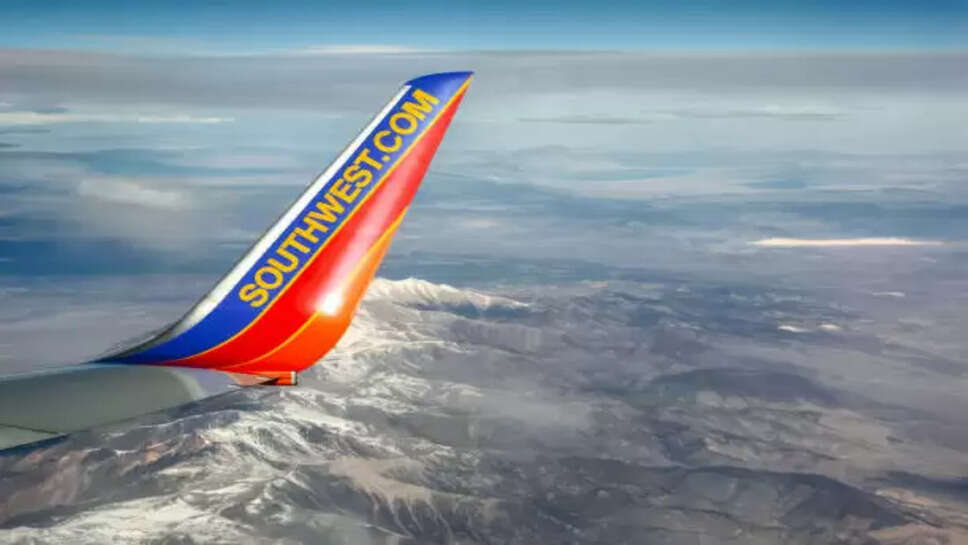High-Altitude Tension: Las Vegas-Bound Southwest Jet Takes Emergency Plunge

Passengers aboard a Southwest Airlines flight experienced a terrifying moment high above the earth as their aircraft took a sudden and dramatic plunge to avoid a potential collision with another aircraft. The flight, bound for Las Vegas, Nevada, was forced into a rapid descent after an unexpected approach by another plane in nearby airspace, triggering emergency avoidance procedures from the flight crew.
Though no one was injured, and the flight ultimately landed safely at its destination, the incident has reignited discussions around air traffic control safety, pilot response times, and the increasing pressure on U.S. skies as commercial aviation returns to pre-pandemic traffic levels.
The Incident: A Sudden Dive in the Sky
The scare occurred at cruising altitude when the Southwest aircraft, reportedly a Boeing 737, was en route over the western United States. The cabin was calm, with many passengers already relaxing or preparing for arrival in Las Vegas. But the mood changed drastically when the aircraft suddenly pitched downward in what passengers described as a "sharp, gut-dropping" descent.
Within moments, passengers were gripping armrests and gasping in shock as drinks spilled and bags shifted from overhead bins. According to flight tracking data later analyzed by aviation watchdogs, the plane dropped several hundred feet in a short span of time—a maneuver considered highly abnormal for that phase of flight.
Behind the scenes, however, the pilots were calmly executing standard collision-avoidance protocols. The aircraft's Traffic Collision Avoidance System (TCAS)—an onboard safety mechanism—had issued an alert, instructing the crew to "descend immediately" due to an incoming threat from another nearby aircraft. The pilots responded instantly, prioritizing the safety of all onboard.
The Role of TCAS and Air Traffic Control
Every commercial airliner is equipped with a TCAS, which provides real-time alerts when another aircraft enters dangerously close proximity. These systems are independent of air traffic control and are programmed to take over in emergencies, directing one aircraft to climb and the other to descend in order to prevent mid-air collisions.
In this case, TCAS kicked in just in time. The reason for the near miss is still under investigation, but early indications suggest that the aircraft may have been entering or exiting shared airspace under the guidance of separate air traffic control centers.
Southwest Airlines confirmed that the crew followed all standard procedures and that passenger safety was never compromised.
“Our flight crew responded immediately and appropriately to ensure the safety of our customers and aircraft,” the airline said in a brief statement. “We thank our pilots for their professionalism and swift actions.”
Passenger Reactions: ‘It Felt Like We Were Dropping Out of the Sky’
For those inside the plane, the experience was harrowing. Several passengers described the sensation of weightlessness during the sudden drop, and others said they thought the plane was about to crash. One traveler recalled how the sudden descent sent a flight attendant stumbling down the aisle, while others clung to seats and prayed.
“It was terrifying,” said one passenger. “We were cruising along and suddenly the plane just dropped. People screamed. It felt like the bottom fell out from under us.”
Despite the fear, cabin crew remained composed, calming nervous passengers and checking on anyone who appeared visibly shaken. Some passengers later praised the crew for their professionalism and reassurance, helping the situation from escalating into panic.
Air Traffic Congestion and Systemic Strains
This incident comes at a time when the U.S. airspace is growing increasingly congested. With the travel industry bouncing back post-pandemic, air traffic controllers are managing an ever-growing web of routes, altitudes, and aircraft types—many with overlapping flight paths in busy corridors, especially around popular destinations like Las Vegas, Los Angeles, and Denver.
Industry experts warn that while TCAS is highly effective, reliance on automated systems should not mask the growing need for upgraded radar infrastructure and more sophisticated air traffic management systems.
“We were lucky today,” said one former FAA official. “But it raises the question—how many more near-misses are we not hearing about?”
This has led to renewed calls for increased investment in air traffic control modernization and better coordination between aircraft and control centers handling high-traffic zones.
Southwest Airlines’ Safety Record
Southwest Airlines, known for its extensive domestic network and reliable service, has maintained a strong safety record over the years. However, the airline—like many others—relies heavily on standardized flight paths, especially on routes to high-demand locations like Las Vegas.
While this incident does not reflect negligence or error on the airline’s part, it underscores the need for constant vigilance, regular training, and stringent enforcement of airspace safety protocols across all carriers.
FAA Investigation Underway
The Federal Aviation Administration (FAA) has confirmed it is reviewing the incident. Both radar logs and cockpit recordings will be analyzed to determine how close the two aircraft came and whether air traffic control instructions contributed to the proximity.
The name and operator of the other aircraft involved have not yet been publicly disclosed. It is still unclear whether the near-collision was due to miscommunication, technical failure, or a procedural lapse.
Pending the outcome of the investigation, the FAA may recommend changes to flight route spacing, controller communication protocols, or altitude assignment systems in certain congested zones.
Lessons and Moving Forward
Though frightening for passengers, the incident serves as a strong testament to the effectiveness of aviation safety protocols and the training of commercial pilots. In moments of unexpected crisis, the quick response by the Southwest crew helped avert disaster.
It also reminds us of the intense coordination required to keep thousands of aircraft safely flying across shared skies every day. Most travelers take this for granted, rarely aware of the complexity behind each safe landing.
As aviation authorities delve into the causes of this near-miss, one thing is clear: constant investment, technological upgrades, and real-time decision-making remain vital pillars of air travel safety.
A Southwest Airlines flight headed for Las Vegas took a sudden dive mid-air to avoid a potentially catastrophic collision with another nearby aircraft. Thanks to onboard safety systems and skilled pilots, disaster was averted, but the incident has ignited fresh concerns about air traffic congestion, system strain, and mid-air safety. While all passengers and crew landed safely, the scare serves as a sobering reminder of the unseen challenges involved in keeping our skies safe.
